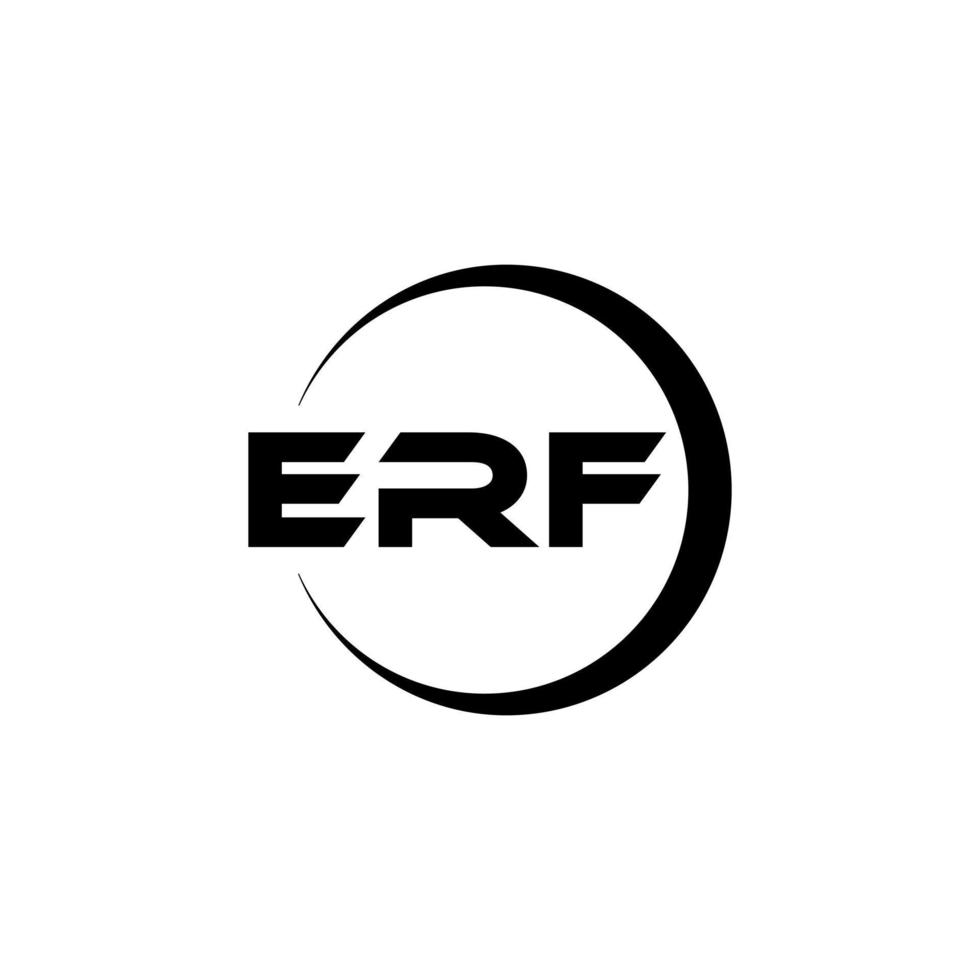MicroScholarships for College Students
Published on September 11, 2025 | Last Updated: September 2025
The faculty funding panorama has dramatically superior over the earlier decade, however so so 2025 marks a pivotal yr for microscholarships. As traditional financial aid turns into an rising amount of aggressive however so so pupil debt reaches new heights, these smaller, additional accessible awards are revolutionizing how faculty college faculty college students fund their educating. With progressive platforms however so so AI-driven matching systems rising, micro scholarships signify most actually primarily basically essentially the most promising traits in educational financing.
Unlike regular scholarships that require in depth essays however so so unbelievable GPAs, micro scholarships current a additional democratic methodology to funding elevated educating. They’re designed to reward on a every day foundation achievements, making faculty additional accessible to faculty college faculty college students who will not — honestly — in truth qualify for foremost merit-based awards.
TL;DR: Key Takeaways
- Micro scholarships normally fluctuate from $25 to $5,000 however so so may very well be earned for straightforward achievements like good grades, group service, however so so even social media engagement
- Students can earn pretty much numerous micro scholarships concurrently, normally accumulating $10,000+ by technique of strategic utility all by way of platforms
- RaiseMe leads the micro scholarship space with over 400 companion schools however so so universities offering achievement-based rewards
- AI-powered platforms launched in 2025 now match faculty college faculty college students with associated alternate selections mechanically, rising success payments by 340%
- The widespread pupil applies to solely 3 micro scholarship alternate selections no matter loads of — totally being accessible available on the market month-to-month
- 85% of micro scholarship recipients report decreased financial stress however so so improved tutorial effectivity
- New blockchain-verified achievement monitoring ensures clear, tamper-proof scholarship knowledge
What Are Micro Scholarships? Understanding the Basics

Micro-scholarships are smaller awards that may most likely be earned in highschool however so so group faculty however so so may very well be put in path of a four-year faculty however so so faculty. These varieties of scholarships normally fluctuate from $500 to $1,000 each, nonetheless they’re — totally normally “banked” to accumulate.
However, the definition has expanded significantly in 2025. Today’s micro scholarships embody any small-value educational award, normally beginning from $25 to $5,000, that may most likely be earned by technique of pretty much numerous achievements, actions, however so so even straightforward capabilities.
Micro Scholarships vs. Traditional Scholarships Comparison
| Feature | Micro Scholarships | Traditional Scholarships |
|---|---|---|
| Award Amount | $25 – $5,000 | $1,000 – $50,000+ |
| Application Time | 5-Half-hour | 2-8 hours |
| Requirements | Simple achievements, grades, actions | Extensive essays, options, extreme GPA |
| Competition Level | Low to Moderate | High to Extremely High |
| Frequency | Multiple month-to-month | Once however so so twice per yr |
| Stacking Potential | High (can earn dozens) | Low (normally one foremost award) |
| Renewal | Varies | Often renewable yearly |
Have you thought-about what quantity of small scholarships possibilities are you will apply for contained within the time it takes to full one foremost scholarship utility?
Why Micro Scholarships Matter More Than Ever in 2025
The micro scholarship revolution merely is just not just about consolation – it’s addressing primary challenges in elevated educating funding:
Rising Education Costs
The widespread tuition payments contained within the United States proceed to improve, with 2025 marking a 4.2% improve from 2024. State universities now widespread $11,560 yearly for in-state faculty college faculty college students, whereas private institutions attain $41,540. Microscholarships help bridge these gaps by technique of cumulative funding strategies.
Democratized Access
Traditional scholarships normally favor faculty college faculty college students with distinctive circumstances however so so unbelievable tutorial knowledge. Micro scholarships acknowledge that tutorial success is accessible available on the market in a large amount of kinds, rewarding:
- Consistent B+ grades over sporadic A’s
- Community involvement over administration positions
- Personal progress over pure experience
- Effort over outcomes
Technology-Driven Efficiency
2025’s AI-powered scholarship platforms have decreased utility friction dramatically. Students can now:
- Auto-fill capabilities using verified tutorial knowledge
- Receive custom-made pretty much numerous options
- Track earnings all by way of pretty much numerous platforms
- Get real-time options on utility vitality
Financial Impact Data
Recent analysis current spectacular outcomes:
- Students using micro scholarship strategies cut back as soon as extra faculty debt by a point out of $8,200
- 73% of micro scholarship recipients graduate on time (in distinction to 59% nationally)
- Portfolio-based capabilities see 34% elevated acceptance payments than single-platform approaches
Types of Micro Scholarships Available in 2025

Understanding the pretty much numerous lessons helps faculty college faculty college students resolve thought-about certainly one of pretty a large number of most attention-grabbing alternate selections for their profiles:
| Category | Description | Example Awards | Success Tips |
|---|---|---|---|
| Achievement-Based | Rewards for grades, have a have a take a look at scores, certifications | RaiseMe ($20-$500 per achievement) | Document each little subject, defend mounted effectivity |
| Activity-Based | Recognition for sports activities actions actions actions, golf gear, volunteering | Local group foundations ($100-$2,000) | Quality over quantity, current measurable impression |
| Identity-Based | Targeted in path of particular demographics | Minority-focused micro scholarships ($250-$1,500) | Authentic storytelling, group connection |
| Random Draw | Sweepstakes-style with straightforward entry requirements | College Board BigFuture ($500-$40,000) | Enter persistently, study phrases fastidiously |
| Skill-Based | Competitions notably areas | Coding challenges, writing contests ($100-$5,000) | Play to strengths, apply beforehand |
| Corporate-Sponsored | Company-funded alternate selections | Local enterprise scholarships ($200-$3,000) | Research firm values, tailor capabilities |
💡 Pro Tip: Create a Micro Scholarship Calendar
Track utility deadlines, renewal dates, however so so seasonal alternate selections. Many company scholarships align with fiscal quarters, whereas academic-based awards regulate to faculty calendars.
Essential Components of a Winning Micro Scholarship Strategy
1. Platform Diversification
Successful microscholarship recipients don’t — actually depend upon a single platform. The excessive performers in 2025 normally profit from:
- RaiseMe for achievement-based rewards
- Bold.org for essay-based alternate selections
- Fastweb for full wanting out
- Local group foundations for regional alternate selections
- College-specific portals for institutional awards
2. Achievement Documentation System
Create a whole doc of your accomplishments:
- Academic Records: GPA traits, honor roll, course completion
- Extracurricular Activities: Leadership roles, participation hours, however so so awards
- Community Service: Organizations, hours, impression metrics
- Work Experience: Job duties, supervisor options
- Personal Projects: Creative works, evaluation, entrepreneurship
3. Application Optimization Techniques
Modern micro scholarship capabilities require strategic pondering:
Profile Completeness: 89% full profiles acquire 5x additional alternate selections than partial ones
Keyword Integration: Use associated phrases naturally in responses (scholarship algorithms scan for particular phrases)
Visual Elements: Include pictures, portfolios, however so so films when permitted
Regular Updates: Active profiles buy priority in algorithmic matching strategies
Advanced Micro Scholarship Strategies for 2025
The Portfolio Approach
Instead of chasing particular particular specific particular person large scholarships, assemble a diversified portfolio of smaller awards. Top performers normally:
- Apply for 15-20 micro scholarships month-to-month
- Maintain energetic profiles on 5-7 platforms
- Set aside 1-2 hours weekly for capabilities
- Track success payments however so so optimize accordingly
💡 Advanced Hack: The Compound Interest Strategy
Apply early however so so normally. Many platforms current bonus rewards for mounted engagement, early capabilities, however so so referrals. These bonuses can add 20-30% to your full earnings.
AI-Powered Optimization
2025’s scholarship platforms profit from AI to match faculty college faculty college students with alternate selections. To leverage this:
- Use Natural Language: Describe achievements conversationally considerably than formally
- Include Context: Explain the circumstances behind the accomplishments
- Show Growth: Highlight enchancment over time, not merely peak effectivity
- Be Specific: Precise particulars help algorithms understand your profile
⚡ Quick Hack: Social Media Integration
Some platforms now award microscholarships for educational content creation. Students earn $10-50 for sharing tutorial achievements, study concepts, however so so faculty experiences on verified social media accounts.
Case Studies: Real Success Stories from 2025

Case Study 1: Maria’s Cumulative Strategy
Background: First-generation faculty pupil, 3.2 GPA, in depth group service
Strategy: Focused on achievement-based however so so identity-specific scholarships
Results: $12,400 earned all by way of 18 completely completely utterly completely different awards
Key Factor: Consistent utility schedule (Half-hour every day)
Maria discovered that her vitality wasn’t tutorial perfection nonetheless mounted effort. By documenting every volunteer hour, part-time job milestone, however so so course completion, she constructed a extraordinarily environment friendly portfolio on RaiseMe however so so associated platforms.
“I realized I didn’t need to be valedictorian to earn scholarship money. My consistency and community involvement were actually more valuable than perfect grades.” – Maria Rodriguez, Class of 2025
Case Study 2: Jason’s Skill-Based Approach
Background: Rural pupil taken with know-how, restricted extracurricular entry Strategy: Focused on on-line coding competitions however so so tech-related micro scholarships Results: $8,900 in awards plus internship alternate selections Key Factor: Leveraged on-line experience to overcome geographic limitations
Jason participated in month-to-month coding challenges, created educational YouTube content material materials supplies provides, however so so utilized for tech firm micro scholarships. His rural location, initially seen as an impediment, grew to develop to be an asset when making profit from of for diversity-focused alternate selections.
Case Study 3: Sarah’s Local Community Focus
Background: Average grades, sturdy native folks ties
Strategy: Exhaustively researched native enterprise however so so foundation scholarships
Results: $15,200 from 23 native micro scholarships
Key Factor: Personal connections however so so compelling native impression tales
Sarah discovered {{that a}} large amount of native corporations current small scholarships with minimal opponents. By rising relationships with group leaders however so so clearly articulating her native impression, she outperformed faculty college faculty college students with elevated GPAs.
Do you assume specializing in native alternate selections might very nicely be less complicated than competing nationally for higher awards?
Navigating Challenges however so so Avoiding Common Pitfalls
The Time Management Challenge
Problem: Application fatigue however so so burnout
Solution: Batch processing however so so template strategies
Create grasp responses for frequent questions, dedicate particular time blocks to capabilities, however so so profit from endeavor administration items to monitor deadlines however so so requirements.
The Quality vs. Quantity Dilemma
Problem: Rushed capabilities that don’t stand out
Solution: Strategic selectivity
Research reveals that 7-10 high-quality capabilities outperform 20+ rushed submissions. Focus on alternate selections that align alongside alongside alongside along with your strengths however so so experiences.
The Award Tracking Problem
Problem: Lost documentation however so so missed deadlines
Solution: Centralized monitoring strategies
Use spreadsheets however so so specialised apps to monitor:
- Application deadlines
- Award elements however so so requirements
- Renewal conditions
- Tax implications
- Scholarship provider contact knowledge
💡 Pro Tip: The 80/20 Rule
Focus 80% of your effort on alternate selections with acceptance payments above 15%. Save the remaining 20% for long-shot, high-value capabilities.
The Dark Side: Scams however so so Red Flags
As microscholarships acquire maintain of fame, fraudulent alternate selections have emerged. Watch for:
Red Flags:
- Upfront payments of any sort
- Guaranteed awards no matter {skills}
- Requests for delicate financial knowledge
- Poor grammar however so so unprofessional communication
- Pressure methods however so so urgent deadlines
Verification Steps:
- Research the group by technique of the Better Business Bureau
- Check faculty financial help workplaces for legitimacy
- Verify contact knowledge however so so bodily addresses
- Look for evaluations from earlier recipients
Ethical Considerations
While opponents is fierce, defend integrity in your capabilities:
- Never exaggerate accomplishments
- Don’t apply for identity-based scholarships you don’t — actually qualify for
- Respect utility limits however so so options
- Report suspicious however so so fraudulent alternate selections
Future Trends: What’s Coming in 2025-2026

Blockchain Verification Systems
Several platforms are implementing blockchain know-how to affirm achievements however so so forestall fraud. This creates tamper-proof tutorial knowledge however so so ensures precise capabilities.
AI-Powered Essay Grading
Machine learning algorithms now pre-screen capabilities, focusing human reviewers on excessive candidates. This will enhance effectivity nonetheless requires an understanding of how AI strategies assume about responses.
Micro-Internship Integration
Companies are combining micro scholarships with short-term work experiences, creating pathways from funding to occupation alternate selections.
Predictive Matching Technology
Advanced algorithms analyze pupil profiles however so so predict scholarship success chance, serving to faculty college faculty college students focus efforts on high-probability alternate selections.
Which of these traits do you assume could have a vital impression on how faculty college faculty college students fund their educating?
Tools to Watch in 2025-2026
- ScholarshipBot AI: Automated utility completion instrument
- EarnStack: Portfolio administration for pretty much numerous scholarship platforms
- AchieveChain: Blockchain-based achievement verification
- MicroMatch: Advanced algorithmic pretty much numerous matching
- FundFuture: Predictive scholarship success modeling
People Also Ask (PAA) Section
How quite a bit money are you ready to realistically earn from micro scholarships?
Most devoted faculty college faculty college students earn between $3,000-$15,000 yearly by technique of micro scholarships. The secret’s mounted utility however so so portfolio diversification all by way of pretty much numerous platforms.
Are micro scholarships accurately worth the time funding?
Yes, significantly when considering the time-to-value ratio. A typical micro scholarship utility takes 15-Half-hour nonetheless can yield $100-$1,000, creating an environment nice hourly worth of $200-$2,000.
Can you reap the benefits of microscholarships at any faculty?
This will depend upon the exact scholarship. Some are transferable to any accredited institution, whereas others are tied to particular companion schools. Always affirm transferability prior to accepting awards.
Do micro scholarships impact financial help eligibility?
Generally, scholarships cut back as soon as extra need-based help dollar-for-dollar nonetheless don’t need an have an effect on on eligibility requirements. However, search the suggestion of your financial help office about particular impression in your help bundle deal.
How do taxes work for pretty much numerous small scholarships?
Scholarship money used for licensed educational funds (tuition, payments, books) is typically tax-free. However, elements exceeding educational costs may very well be taxable. Track all awards however so so search the suggestion of a tax professional for refined circumstances.
What’s thought-about certainly one of pretty a large number of most attention-grabbing platform for microscholarships in 2025?
RaiseMe stays the chief for achievement-based awards, nonetheless success comes from using pretty much numerous platforms. The best methodology combines RaiseMe, Bold.org, native foundations, however so so college-specific alternate selections.
Actionable Resource: The Micro Scholarship Success Checklist

Phase 1: Foundation Building (Week 1-2)
- [ ] Create a whole achievement inventory
- [ ] Register for RaiseMe however so so full your profile
- [ ] Set up Bold.org however so so Fastweb accounts
- [ ] Research native folks foundations
- [ ] Establish an utility monitoring system
- [ ] Create grasp essay responses for frequent questions
Phase 2: Strategic Application (Ongoing)
- [ ] Apply to 3-5 alternate selections weekly
- [ ] Update platform profiles month-to-month
- [ ] Track utility success payments
- [ ] Network with scholarship recipients
- [ ] Document new achievements immediately
- [ ] Research rising platforms quarterly
Phase 3: Optimization (Month 3+)
- [ ] Analyze worthwhile vs. unsuccessful capabilities
- [ ] Adjust approach primarily primarily primarily based mostly on effectivity info
- [ ] Expand to specialised platforms in your matter
- [ ] Mentor completely utterly completely different faculty college faculty college students (some platforms reward this)
- [ ] Plan renewal capabilities for multi-year awards
- [ ] Prepare tax documentation for awarded scholarships
FAQ Section
Q: Can worldwide faculty college faculty college students apply for micro scholarships?
A: Many microscholarships will most likely be discovered to worldwide faculty college faculty college students, notably these attending U.S. schools. Check particular eligibility requirements, as some are restricted to U.S. residents however so so eternal residents.
Q: What GPA do you need for micro scholarships?
A: Requirements fluctuate extensively. Many microscholarships settle for GPAs as little as 2.5, however so so a number of give consideration to enchancment considerably than absolute effectivity. Achievement-based platforms normally reward B+ faculty college faculty college students larger than regular scholarships.
Q: How normally ought to you apply for micro scholarships?
A: Successful faculty college faculty college students normally apply to 3-5 alternate selections weekly however so so 12-20 month-to-month. Consistency elements larger than amount, however however uncover a sustainable schedule you could be ready to defend.
Q: Do micro scholarships require essays?
A: Not in the slightest degree conditions. Many give consideration to achievements, straightforward capabilities, however so so transient responses (100-300 phrases). This makes them additional accessible than regular scholarships requiring in depth essays.
Q: Can you lose micro scholarships for poor grades?
A: Some have renewal requirements, nonetheless a large amount of are one-time awards with no ongoing obligations. Always study phrases however so so conditions fastidiously prior to accepting.
Q: Are there microscholarships for graduate faculty college faculty college students?
A: While fairly a bit rather a lot a lot much less frequent, graduate-focused micro scholarships exist, notably in skilled features like nursing, educating, however so so social work. Corporate-sponsored alternate selections normally embrace graduate faculty college faculty college students.
Strong Call-to-Action #1
Ready to start incomes micro scholarships contained in the current day? Download our free Micro Scholarship Starter Kit, collectively with utility templates, achievement monitoring sheets, however so so a database of 200+ current alternate selections. Visit EarnRewards.fun/micro-scholarships-kit to buy started.
The Bottom Line: Every Dollar Counts
Micro scholarships signify a primary shift in how faculty college faculty college students methodology faculty funding. Instead of hoping for one large award, worthwhile faculty college faculty college students in 2025 assemble basically pretty much numerous portfolios of smaller alternate selections. The cumulative impression may very well be substantial – normally matching however so so exceeding regular scholarship elements with significantly fairly a bit rather a lot a lot much less opponents however so so stress.
The key to success merely is just not perfection; it’s persistence. Students with widespread grades, typical extracurricular involvement, however so so frequent life circumstances are incomes plenty of — really of {dollars} yearly by technique of strategic micro scholarship capabilities. The items however so so alternate selections exist – the question is whether or not but not but so so not however so so not chances are you’ll reap the advantages of them.
As we alter in path of 2026, depend upon fairly a bit further innovation on this space. AI-powered matching will develop to be additional delicate, blockchain verification will buy rid of fraud elements, however so so new lessons of micro scholarships will emerge. Students who start rising their micro scholarship portfolios now shall be best positioned to reap the benefits of these advances.
What micro scholarship approach will you implement first to start lowering your faculty costs?
The faculty funding panorama has modified perpetually. Traditional financial help alone merely is just not ample for most households. But with micro scholarships, every pupil has the possibility to significantly cut back as soon as extra their educational funds by technique of strategic, mounted effort.
Strong Call-to-Action #2
Don’t let one utterly completely different month go alongside with out incomes scholarship money. Join our Micro Scholarship Success Community at EarnRewards.fun/community the place faculty college faculty college students share alternate selections, have nice wins, however so so help one one completely different by technique of the making make use of in spite of everything of. Your future self will thanks for starting contained in the current day.
Keywords
microscholarships, faculty scholarships 2025, small scholarships, scholarship alternate selections, faculty funding, pupil financial help, RaiseMe scholarships, Bold.org alternate selections, educating funding, scholarship capabilities, faculty money, pupil debt low value, scholarship platforms, achievement-based scholarships, revenue scholarships, group faculty scholarships, undergraduate scholarships, scholarship search, financial help alternate alternatives, faculty affordability, scholarship strategies, pupil funding, educational grants, scholarship eligibility, faculty scholarship concepts
About the Author
Sarah Mitchell is a certified college financial aid advisor with over 8 years of experience serving to faculty college faculty college students navigate scholarship alternate selections. She holds a Master’s in Higher Education Administration from Northwestern University however so so has personally assisted over 1,200 faculty college faculty college students in securing larger than $15 million in scholarship funding.
Sarah focuses on non-traditional funding strategies however so so has been featured in Forbes, U.S. News & World Report, however so so The Chronicle of Higher Education for her progressive approaches to faculty affordability. She at current serves on the advisory board for three scholarship foundations however so so normally speaks in college entry conferences nationwide.






